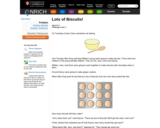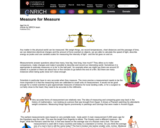
Provides strategies to improve the quality of discussion in online as well as in-person formats.
- Subject:
- Professional Learning
- Material Type:
- Reading
- Provider:
- Utah State Board of Education
- Date Added:
- 06/08/2023

Provides strategies to improve the quality of discussion in online as well as in-person formats.

This website and professional texts by Jeff Zwiers offer a variety of resources (tools, research, videos, etc.) for strengthening the quality and quantity of productive academic conversations.

A high school teacher describes an assignment in which students study the histories and social reception of words (in some cases considered obscenities) used to insult people of various social categories. Students come to recognize the powerful, sometimes damaging effects of language, enabling them to fight those effects intellectually. Many derogatory terms are cited as examples in this essay.

Recorded lectures introducing concepts of validity and reliability.

In this Cult of Pedagogy podcast, Jennifer Gonzalez defines three different approaches to designing rubrics to assess student work and provides examples of each, while discussing the benefits and drawbacks of the different models. Teachers may find these resources useful as they consider how they use their rubrics for response to and/or assessment of student writing.

Guide to planning assessments for specific learning objectives, including establishing validity and reliability.

This activity gives students a chance to make estimates and comparisons of the measures of length (height) and capacity. It presents an image of a tiny elf next to a normal size mug. Students are asked to estimate the Little Man's height and compare it with that of other objects. Next, they are asked to estimate the height and volume of the Little Man's mug. The Teachers' Notes page includes suggestions for implementation, discussion questions, and ideas for extension and support.

This problem allows students to explore introductory multiplication and division concepts in the context of sharing cookies ("biscuits" in the UK). Cookies are displayed in two different arrays, and students are challenged to divide them equally among two, three, five, and six people and to deal with remainders. The Teachers' Notes page offers rationale, suggestions for implementation, discussion questions, ideas for extension and support, and a printable sheet (pdf).

This blog post provides an overview of how mentor texts fit in lessons.

In this English Journal article, Mazura et al. describe six strategies to use during the revision process, showing how these strategies support the development of students’ voice and agency as writers.

This brief article for young learners describes how ancient cultures developed units of measurement like the cubit and foot, and how estimation and precision play a role in measuring today. A printable page is available.

This is an example of the Mentor Text Table you will submit as Evidence of Preparation and Planning.

This blog post on the University of Washington Center for Educational Leadership website offers a concise and clear overview of how to read and analyze a text in preparation for unit plan design.

Describes a study that integrates grammar into the teaching of writing. Provides a good review of other articles and titles that will help explain the research base for this approach.

Assessment definitions and principles for literacy assessment adopted by the National Council of Teachers of English.

This document walks teachers through the questions to ask in preparing a writing task and helps them consider all aspects in creating a writing prompt.

This position statement from the National Council of Teachers of English defines the components of effective reading instruction and cites research to support these ideas. It provides a comprehensive overview of the teaching of reading in the 21st century as well as recommendations for teaching reading for teachers and guidelines for policy makers.

In this English Journal article, Elizabeth Thackeray Nelson describes a writing unit she taught with 12th-grade students. She defines the learning goals and describes the range of writing strategies she used with her students throughout the writing process––from inquiry to drafting to revision to publication––of developing community action projects. This article may help teachers who would like to read about how a teacher builds a unit and integrates writing strategy instruction and reflection with student writers.

This text provides an overview of the components of effective vocabulary study for middle grades readers. It includes meaningful supports for selecting words, word study, vocabulary development, and assessment.

NCTE and its constituent groups have developed position statements on a variety of education issues vital to the teaching and learning of English language arts.